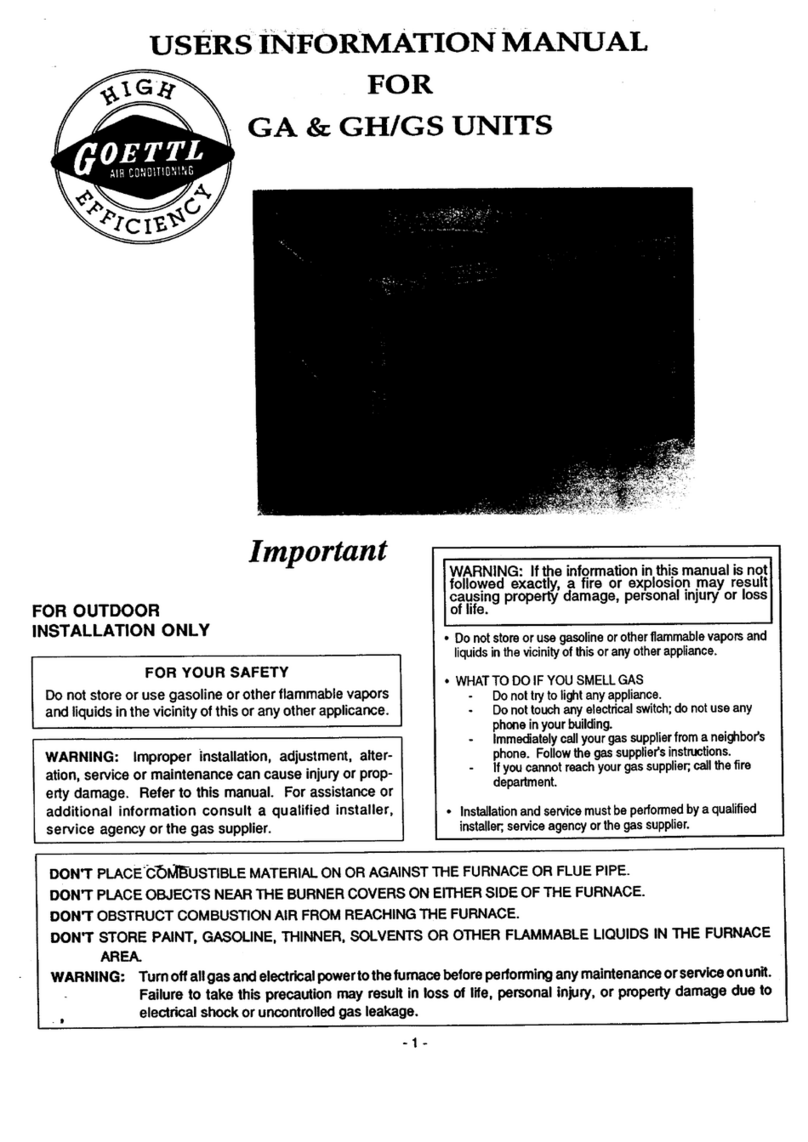UNIT MAINTENANCE (CONT.)
!
WATER CONTROL: The overflow standpipe screwed into drain bushing forms a water reser-
voir of the cooler bottom. The floating valve regulates water supply intocooler reservoir. The
depth of water is regulated by loosening the float adjustment screw and raisingor lowering
float untilwater level remains approximately 2 1/2 deep. If manual valve is present in water
supply line, open valve and allow to remain open during the cooling season. Water flow
to cooler pads isfurnished bythe recirculating pump, and the desired amount of water is regu-
lated bythe water check clamp located on pump hose between pump and water distributor.
BLEED OFF A'I-rACHMENT KIT: A small, pinpoint amount of =used"water is bled off ordis-
carded whenever the pump is in use. This keeps the water fresh and free from mineral con-
centrations.
CLEANING: The cooler cabinet and recirculating pump should be periodically inspected,
cleaned and all scratches or bare metal should be covered with suitable protective paint. To
prevent excessive deposits of water minerals and sediment, the reservoir pan should be
cleaned at least every sixty days of operation. When a recirculating pump is used, remove
overflow standpipe from drain fitting and allow water to drain, thoroughly clean pump and
components making sure that impeller is free before cooler operation. Replace standpipe and
fill reservoir. Operate cooler 15 minutes, then allow all water to drain through, thus cleaning
entire system, always drain water reservoir completely when cooler is not in use over pro-
longed periods and particularly at end of cooling season.
OILING: All motors and blower shaft bearings are oiled at the factory, butshould be checked
before operating cooler. If need for oiling is indicated, use any good grade S.A.E. No. 20 or 30
oil. Apply 2 or 3 drops of oil to each oil cup on cooler motor and pump motor. The oil cups on
blower shaft bearings should be filled. Under normal use, oiling is required every three months
of operation.
THE SLIDING DAMPER: (Optional) On the blower, housing should be closed in the fall to
keep cold air from entering the building. For pre-season cleaning, with the damper still
closed, the blades of the blower are accessible for cleaning through the opening in the
blower housing, this makes it possible to keep debris from entering the home.
IMPORTANT: Before operating cooler at the beginning of each cooling season, turn blower
wheel, cooler motor and pump motor shafts by hand to make sure they turn freely. Failure to
do this may result in burning out motor.
FILTER PADS: Filter pads should be replaced with fresh aspen fiber excelsior and DUSTRAP
filterat least once a year, at the beginning of each cooling season. The need for changing
pads mor_ ff_quently varies with localityand rapidity with which dirt, alkali, and o.th0rforeign
matter accumulates in pads. If cooling efficiency is impaired, it may be desirable to change
pads several times during cooling season.
-8-





























